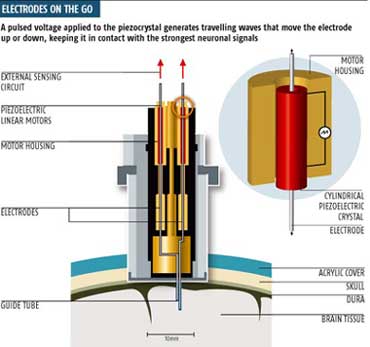So far, implanted electrodes are unable to sense consistent neuronal signals for more than a few months.
Therefore, devices that automatically move electrodes through the brain to seek out the strongest signals will be essential tools if brain implants are ever going to work.
Joel Burdick and Richard Andersen at California Institute of Technology in Pasadena have developed the autonomous microdrive, a device in which the electrodes sense where the strongest signal is coming from, and move towards it. The prototype is mounted on the skull and uses piezoelectric motors to move four electrodes independently of each other.

It has successfully been used to decode motor signals in rats and intention signals in monkeys.
The microdrive is still too bulky to be used for people and the team is working to make a smaller version with up to 100 electrodes so that within a year they expect to be able to fit a paralysed person with a microdrive implant that will allow them to control a computer cursor and navigate the web.
Autonomous microdrives could also eventually be used in other types of implant, such as the deep brain stimulators used to treat Parkinson’s disease.
Via New Scientist.
